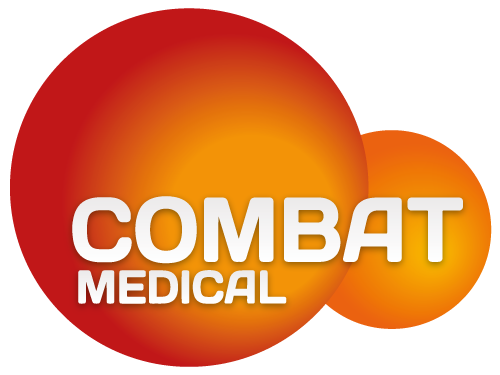Pancreatic adenocarcinoma is one of the most lethal forms of cancer. Its incidence is on the rise and, in many regions, it is predicted to become the second leading cause of cancer death in the coming decades. Unlike many other cancers, which have seen improvements in survival rates thanks to early detection and advanced treatments, pancreatic adenocarcinoma continues to have a devastating prognosis. This cancer often presents at an advanced stage, when treatment options are limited, contributing to a poor five-year survival rate that ranges between 2% and 9%. Amongst all cancer sites, pancreatic cancer ranks last in terms of prognostic outcomes for patients, so it is vital to increase awareness and understanding of its risk factors, symptoms, and emerging treatments.
Risk Factors for Pancreatic Cancer
A better understanding of the risk factors associated with pancreatic cancer can help healthcare professionals and the general population recognise early warning signs and possibly engage in preventive measures. These risk factors can be categorised into non-modifiable and modifiable groups.
Non-Modifiable Risk Factors
Age: The risk of pancreatic cancer increases with age, with most cases diagnosed in individuals over the age of 60.
Sex: Men have a slightly higher risk of developing pancreatic cancer compared to women, though the reasons for this remain unclear.
Ethnicity: Some ethnic groups, particularly African Americans, have a higher incidence of pancreatic cancer, possibly due to a combination of genetic and environmental factors.
Blood Group: Studies have indicated that people with non-O blood groups (A, B, or AB) have a higher risk of developing pancreatic cancer compared to those with blood group O.
Gut Microbiota: Emerging research suggests that gut bacteria may play a role in the development of pancreatic cancer, although the exact mechanisms remain under investigation.
Family History and Genetic Susceptibility: A family history of pancreatic cancer significantly increases an individual’s risk. Certain genetic mutations, such as BRCA1 and BRCA2, as well as Lynch syndrome, can also increase susceptibility to pancreatic cancer.
Diabetes: Both type 2 diabetes and new-onset diabetes in older adults can be linked to an increased risk of pancreatic cancer. Whether diabetes directly causes pancreatic cancer or is a symptom of it remains an area of ongoing research.
Modifiable Risk Factors
Smoking: Smoking is one of the strongest modifiable risk factors for pancreatic cancer, doubling the risk for individuals who smoke.
High Alcohol Consumption: Excessive alcohol consumption, especially when associated with chronic pancreatitis, significantly increases the risk of developing pancreatic cancer.
Chronic Pancreatitis: Long-term inflammation of the pancreas, often caused by heavy alcohol use or genetic disorders, predisposes individuals to pancreatic cancer.
Obesity: Individuals with obesity have a higher risk of developing pancreatic cancer, particularly those with excess abdominal fat, which has been linked to inflammation and insulin resistance.
Dietary Factors: Diets high in red and processed meats and low in fruits, vegetables, and fibre may increase the risk of pancreatic cancer.
Symptoms and Early Detection
Pancreatic cancer is often asymptomatic in its early stages, which contributes to late diagnosis. When symptoms do appear, they can be vague and easily attributed to other conditions. Common symptoms include:
- Jaundice (yellowing of the skin and eyes)
- Unexplained weight loss
- Loss of appetite
- Abdominal pain that may radiate to the back
- Nausea and vomiting
- New-onset diabetes, particularly in individuals over 50
Given that many of these symptoms overlap with other common illnesses, pancreatic cancer is often not diagnosed until it has progressed to an advanced stage. This highlights the need for greater awareness and improved screening methods to detect the disease earlier.
The Pathology of Pancreatic Cancer
Pancreatic adenocarcinoma arises from the exocrine cells of the pancreas, which are responsible for producing digestive enzymes. The tumour typically develops in the head or body of the pancreas and tends to invade nearby tissues, such as the bile duct, small intestine, and stomach, making surgical removal challenging. These tumours are highly aggressive and prone to metastasising to distant organs like the liver, lungs, and peritoneum. The dense stromal environment surrounding pancreatic tumours also makes them resistant to chemotherapy and radiation therapy, contributing to the poor outcomes associated with the disease.
Combat Medical’s Approach – Advanced Treatment with HIPEC
Combat Medical offers an innovative approach to treating pancreatic cancer through the use of Hyperthermic Intraperitoneal Chemotherapy (HIPEC) following cytoreductive surgery. HIPEC is a treatment method in which heated chemotherapy drugs are delivered directly to the peritoneum after the surgical removal of visible tumours. This localised treatment can kill any remaining cancer cells, increasing drug concentration at the site of the tumour while reducing systemic exposure to chemotherapy, thereby minimising side effects.
By delivering chemotherapy directly to the peritoneum, HIPEC helps to target microscopic cancer cells that may have been left behind after surgery, reducing the likelihood of recurrence. This approach has shown promise in improving outcomes for patients with peritoneal metastases from pancreatic cancer, offering hope for more effective treatment options in a disease with otherwise dismal survival rates.
While much remains to be done regarding research and public awareness, Combat’s HIPEC treatment offers promise for better outcomes in the future, along with hope for patients facing this deadly disease.

